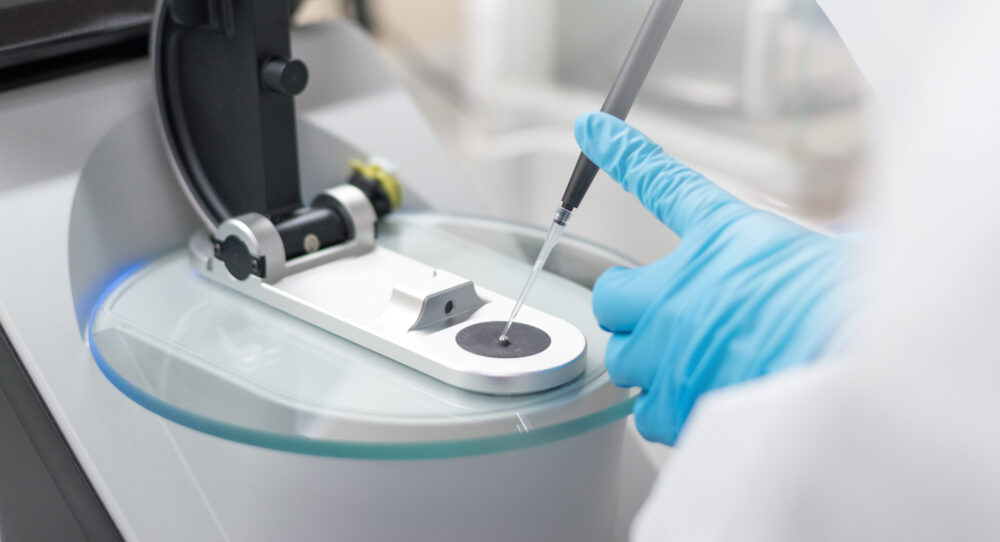
Nanotechnology: Sensitive Sensors for the Detection of Pollutants and Toxins
Small, smaller, nano: some hail it as an up-and-coming key technology, while others boycott it as a devilish invention that is harmful to health and the environment – nanoproducts. The use of microscopically small particles and materials divides experts and users and is the subject of cross-industry debate. Bürklin Elektronik sheds light on this controversial topic and explains how nanotechnology in the form of sensitive sensors can also be seen as a valuable opportunity for the environment and nature.
Table of contents
- What is nanotechnology?
- Where nanotechnology is already being successfully used
- Nanotechnology: challenges and critical perspectives
- Nanotechnology as an environmental opportunity
- Nanosensors – reliable tools for localising pollution
- Nanosensors – small in size, big on performance
- Future prospects and research directions
- Nanotechnology: problem and solution at the same time?
What is nanotechnology?
Nanotechnology is an interdisciplinary field of research that deals with the development, characterisation and application of materials and devices that operate at the nanoscale. This spectrum encompasses dimensions of around 1 to 100 nanometres (nm). By way of comparison, a human hair is around 50,000 nanometres wide.
At this scale, materials often exhibit unique physical, chemical and biological properties that differ from the characteristics of the same material at a larger scale. For example, something that was previously considered insoluble can suddenly dissolve in water. Scientists and engineers can manipulate materials at the molecular level, enabling them to develop more precise and efficient technologies and products.
Where nanotechnology is already being successfully used
Many industries have been relying on the future-oriented nanotechnology for a long time. We have put together a small excerpt of the typical fields of application for you:
In medical technology, nanoparticles are already being used to enable targeted therapies in cancer treatment. They ensure that active ingredients are transported directly to the tumour cells. This process can increase treatment efficiency and minimise side effects.
In the textile industry, nanoparticle-based coatings improve the functionality of fabrics – a technology that is used primarily in sportswear. The materials become water-repellent, dirt-repellent or even antibacterial, without affecting their breathability.
Nanotechnology is also in particularly high demand in the electronics industry. Miniaturisation enables devices, components and machines to achieve greater performance and energy efficiency. Microchips and sensors benefit from the precise structuring of materials on an atomic level, which makes it possible to create smaller but more powerful components.
Nanotechnology: challenges and critical perspectives
Despite their great potential, the application and disposal of nanomaterials also give rise to concerns. The tiny particles can enter the environment and have potentially harmful effects on ecosystems and human health. The regulation of nanotechnologies is another significant challenge. Due to the novelty and complexity of nanotechnology, legal provisions often lag behind technological developments. The main points of criticism at a glance:
- Bioaccumulation: nanoparticles can accumulate in biological systems and be passed through the food chain, which can pose unforeseen ecological and health risks.
- Toxicity: Some nanomaterials have been shown to be toxic to flora and fauna, especially when they interfere with their elementary biological functions. This risk exists when nanoparticles enter groundwater.
- Lack of standardisation: There are still no comprehensive international standards to ensure the safety and environmental compatibility of nanoproducts.
- Assessment of long-term effects: Nanotechnology has developed particularly rapidly in recent years. The long-term effects of many of the nano-materials used are not yet fully known – a fact that makes it difficult to draw up safety guidelines.
Nanotechnology as an environmental opportunity
When it comes to nanotechnology, it is also worth taking a look at the potential and opportunities it offers. When it comes to innovative measures for environmental protection, one term is particularly popular: nanosensors. They use the unique properties of materials at the nanoscale to detect chemical, biological or physical events quickly and precisely. This also makes sensors interesting for monitoring environmental contaminants. This is because molecular changes that cause pollution are detected more quickly, which results in a faster response.
Nanosensors – reliable tools for localising pollution
Nanosensors are highly sensitive devices that exploit the unique physical properties of nanomaterials. These are characterised by their large surface area relative to their volume, which makes them particularly reactive to chemical and physical changes in their environment. They become active at the slightest change and thus detect the precursors of urban or industrial pollution.
A concrete example is the use of carbon nanotubes. They serve as sensors for the early detection of volatile organic compounds (VOCs) in indoor air. Such emissions are usually harmful gases or vapours – for example, solvents from industrial manufacturing processes.
Nanosensors – small in size, big on performance
Unlike traditional detection methods, nanosensors enable a previously unattainable level of precision in monitoring environmental pollution. These models offer several advantages over conventional measurement methods:
- Higher sensitivity and specificity: the high sensitivity of nanosensors allows toxins and contaminants to be identified at extremely low concentrations, before they can cause significant damage.
- Miniaturisation: Due to their small size, sensors can be used in difficult-to-access environments.
- Data quality and quantity: Through continuous real-time monitoring, nanosensors generate a large amount of data that can be used for precise environmental analyses and for concrete environmental management.
- Cost efficiency: The mass production of nanosensors is becoming increasingly cost-effective, which facilitates and promotes their widespread implementation.
Future prospects and research directions
Research in the field of nanotechnology is dynamic and promises constant improvements in efficiency and application areas. On the one hand, work is being done in the field of materials science to further increase sensitivity and selectivity through new developments. On the other hand, the focus is on combining it with other technologies – in particular, integrating it with IoT devices.
The combination of nanosensors with the Internet of Things enables particularly comprehensive and seamless real-time monitoring of environmental conditions. Artificial intelligence and machine learning are also coming into focus in these considerations. For example, they can contribute to the development of complex data analyses and automated response systems.
Nanotechnology: problem and solution at the same time?
Nanotechnology is and remains a double-edged sword in terms of environmental compatibility. However, if used correctly, it has great potential and offers significant advantages in terms of environmental detection, which could offset the existing challenges. In view of the expected benefits of nanotechnology, increased investment in research and development is essential to fully exploit its potential and manage the risks.
Technical topics related to environmental protection
At Bürklin Elektronik, we have set ourselves the goal of continuously offering you a wide range of products as a reliable distributor of electrical and electronic components from well-known manufacturers. In addition, we are committed to sharing our expertise in electronics.
In our online magazine you will therefore find a wide range of interesting articles on the most important topics in the industry. From electronics manufacturing and energy efficiency to medical technology, you will gain a comprehensive insight.
For further information on sustainable approaches in electronics, we also recommend the magazine articles “Sustainable manufacturing: sustainability approaches for the manufacturing industry” and “Sustainable energy solutions“. Enjoy reading!


